As you already know we’ve been testing the Philips CoralCare lighting system on our aquarium.
We don’t have a complete review yet, but we can share what we have discovered so far. Let’s begin with the analysis of CoralCare peculiarities.
Philips CoralCare technical specs
Each ceiling light contains 104 LEDs. Its declared power is 190 watts. All the LEDs are by Philips Lumileds and are arranged in this way:
- 40 x Luxeon TX 6500K/70;
- 32 x Luxeon T Royal Blue;
- 16 x Luxeon UV 420nm;
- 8 x Luxeon Rebel Cyan;
- 8 x Luxeon Rebel Phosphor Converted Amber.
Below, we’ve outlined the arrangement of the two channels in which the LEDs are divided:
Channel 1:
- 32 x Luxeon T Royal Blue
- 16 x Luxeon UV 420nm
Channel 2:
- 40 x Luxeon TX 6500K/70
- 8 x Luxeon Rebel Cyan
- 8 x Luxeon Rebel Phosphor Converted Amber
Dimensions
- Length: 45 cm
- Width: 35 cm
- Height: 10 cm
- Weight: 10 kg
Selling price: 749 euros ($800 US)
Pictured above is the CoralCare ceiling light with the optical elements in front of the LEDs; they spread the light with an angle bigger than 63°.
Durability
Philips’ ceiling light has incredible durability. In fact, the LEDs (of 3 watts and 5 watts) are controlled with very low electricity, and can sustain over 25,000 operation hours. Specs state that, if they are used in spaces with temperatures lower than 35 degrees C (95 degrees F) at 100% of their power, after 25,000 hours, 90% of the ceiling lights will still have 80% of their original power. And obviously, any change in the useage will reduce or increase the duration. With an average use of about 12 hours, it’s like 4 hours a day with the full power of the ceiling lights – that’s almost 6,249 days of work, or about 18 years. Impressive isn’t it?
Construction
The Philips CoralCare has excellent workmanship; the power supply of the ceiling light is located inside the shell, and this has noticeable effects on the use: first of all, we don’t have to worry about the lack of space in our piece of furniture; and second, they can easily and efficiently disperse the heat in a open space.
The Planning
The software is only designed for Windows and it doesn’t work with WiFi. It only has two LED channels available, with specific limits, which means that it isn’t possible to do too strange combinations and harm the corals.
Lunar phases aren’t available, and the minimum brightness is too intense for nocturnal use. It’s also impossible to configure an adaptation period. But considering the light spread of the fixture, it shouldn’t be a problem.
The setup is extremely simple, and it’s nearly impossible to make a mistake. You simply set the color point, including cold or warm tones, the intensity, and the time; there’s even an easy-to-read graphic to help you plan it perfectly.
Pictured above is my actual planning. It starts at 10:00 am with only the blue light, and then at 11:00 am turns on the white one. At noon, the white light increases until 4:00 pm, where it hits its maximum intensity. From there, it symmetrically decreases until midnight, when it is left with only residual light.
Measurements
We can’t say anything definitive yet about the corals, because our aquarium is still growing and maturing. But we could do some quick measurements with the Seneye Reef system probe, which we reviewed some time ago, and whose software has been recently upgraded: the compartment of the luxmeter got better and the PUR has been included in the PAR sensor.
We took three measurements, all from the middle of the ceiling light in uniformity with others ceiling lights. We stood about 20 cm from the ceiling light and we recorded its maximum power, and then the maximum expressed by just the channel 1 and the channel 2.
As you can see in the graphic the measurements are:
- PAR: 1,496
- Lux: 55,230
- PUR: 70%
With just the white range we obtained:
- PAR: 744
- Lux: 27,462
- PUR: 57%
- Kelvin 4,967
With just the blue range we obtained:
- PAR: 754
- Lux: 27,844
- PUR: 84%
It’s possible to see the simplified curve of each of the two channels, and of the resulting combined lighting. It’s immediately clear how the calibration of the channel 1, with the blue range, expresses the same component of PAR and LUX, and a more elevated PUR level (+47%).
The comparison with other ceiling lamps
Obviously, we need to compare these results with the measurements done on similar ceiling lights. The GNC 466 registered a value of 696 PAR and 25,697 Lux. Almost double.
The Radion G2 PRO, the most recent radion we could test, at the middle of the ceiling light has 2,117 PAR, 78,049 Lux and PUR 72%. These values are higher, but Radions are Cluster ceiling lights, so they structurally have very high values at the middle, but a much smaller spread, much different from the Philips CoralCare and the GNC 466, which have their LEDs on a wider surface.
From the point of view of aquarium coverage, the last two are better than the radion. But these are executive choices that you may or may not prefer.
Consumption
It is possible to measure the instant power consumption with the practical RCE PM600, which can also measure the power factor (cosφ). The result is given in watts:
The calculation of the absorbed current is:
Philips CoralCare ceiling light: 193 watt
The same declared value of 190 w (+1,6%).
Price and cost/watt relationship
The Philips CoralCare costs 749 euros ($800 US).
The absorbed power is 193 watt, so its cost/watt ratio is 3.88 euros ($4.15 US) for each watt. That’s the best value we’ve registered to date. Comparing it to the other ceiling light we had, the Ceab Slide&Led had 9 euros per watt, while the GNC AM 466 had a value of 13.3 euros for watt, the Radions had between 4.64 and 4.93, depending on the type, and the OceanLed Sunrise 600 had 4.83 euros for watt.
Partial conclusions
We can’t write proper conclusions because we still haven’t had the time to finish the test in our aquarium, but we can tell you what we think so far.
The ceiling light is well built, solid, impressive, and its cost per watt is one of the best in its category. Stylistically, it isn’t the most beautiful, but it does a great job, it’s very powerful, and easy to set up.
The specific power is very high and, thanks to the measurements done, it should easily cover a surface of 100×80 (as it has been declared) for less-demanding corals and 80×60 for demanding corals.
We’ll talk about it again, but if you have any questions, we are ready for you.
[Translated by Agnese Poggi]



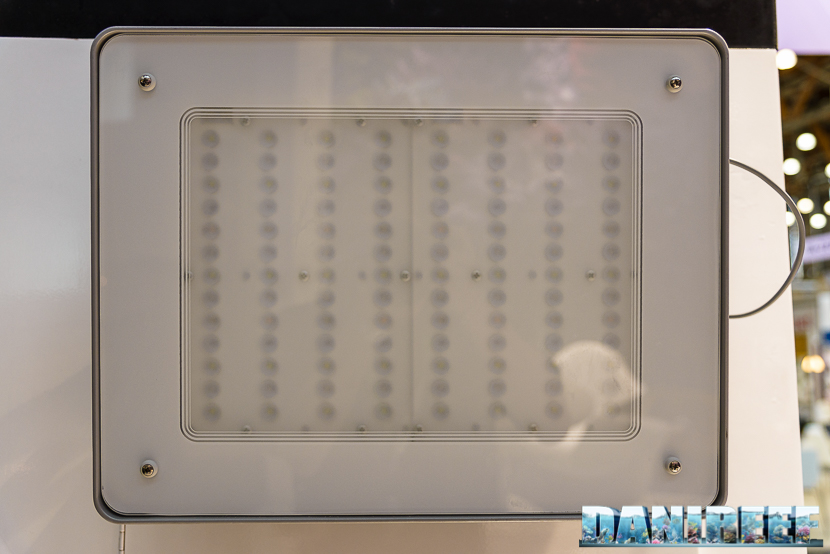
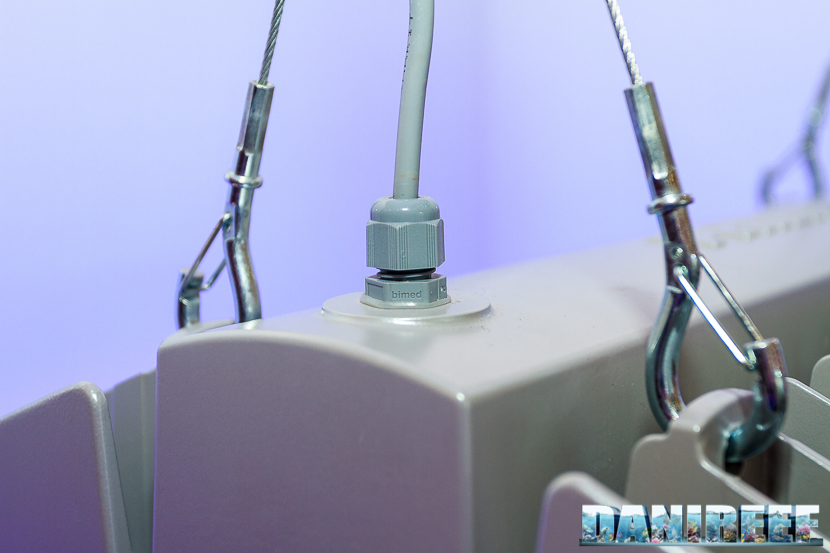
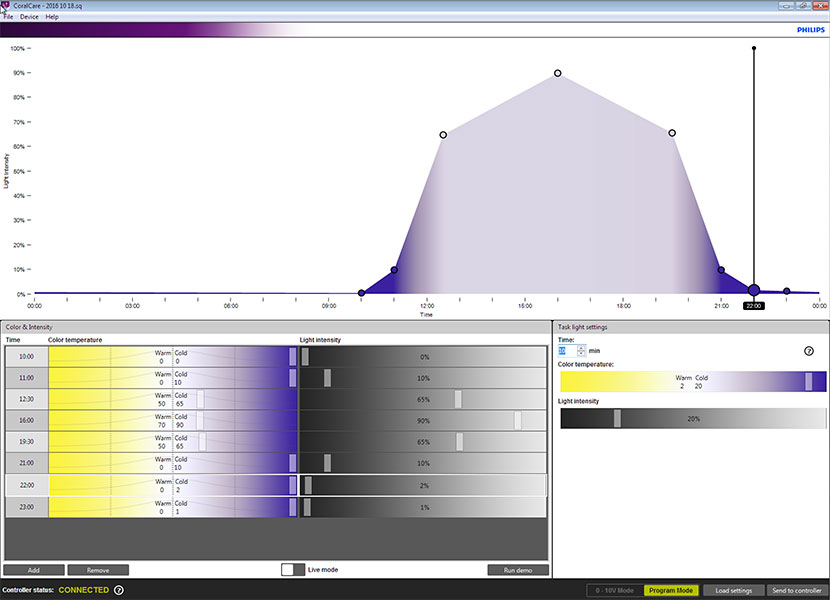
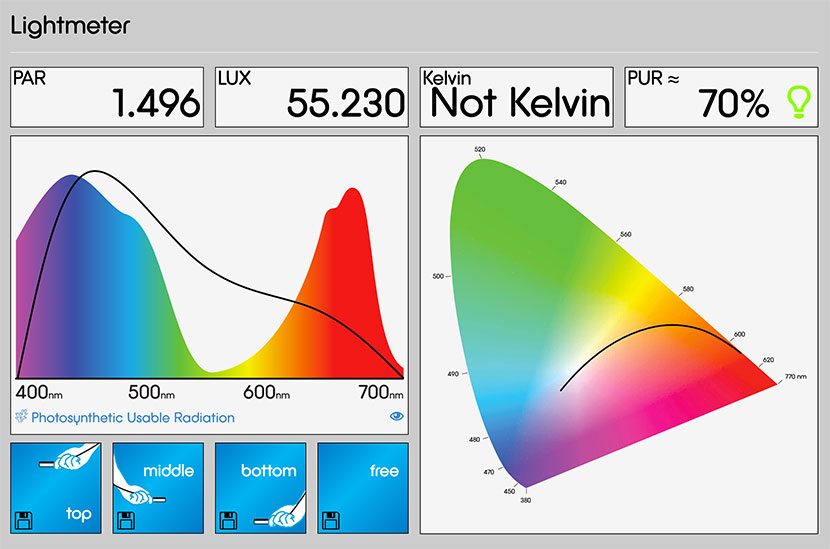

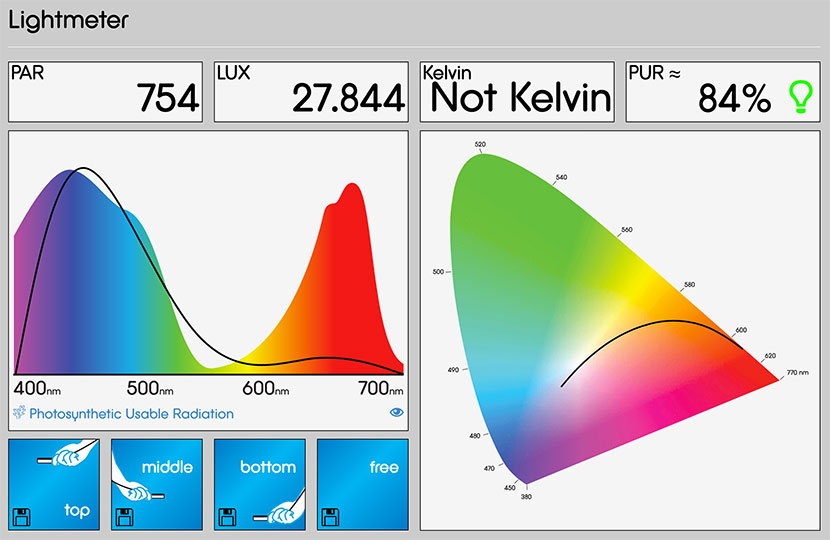

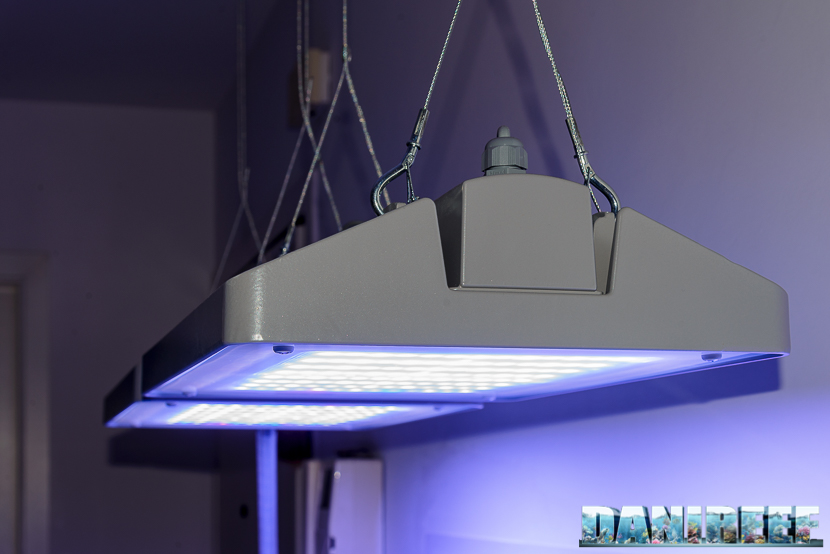
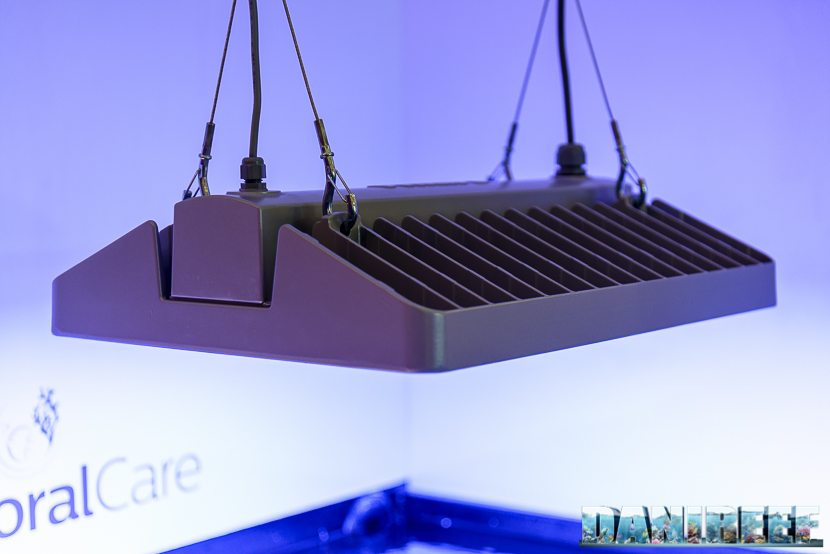









0 Comments